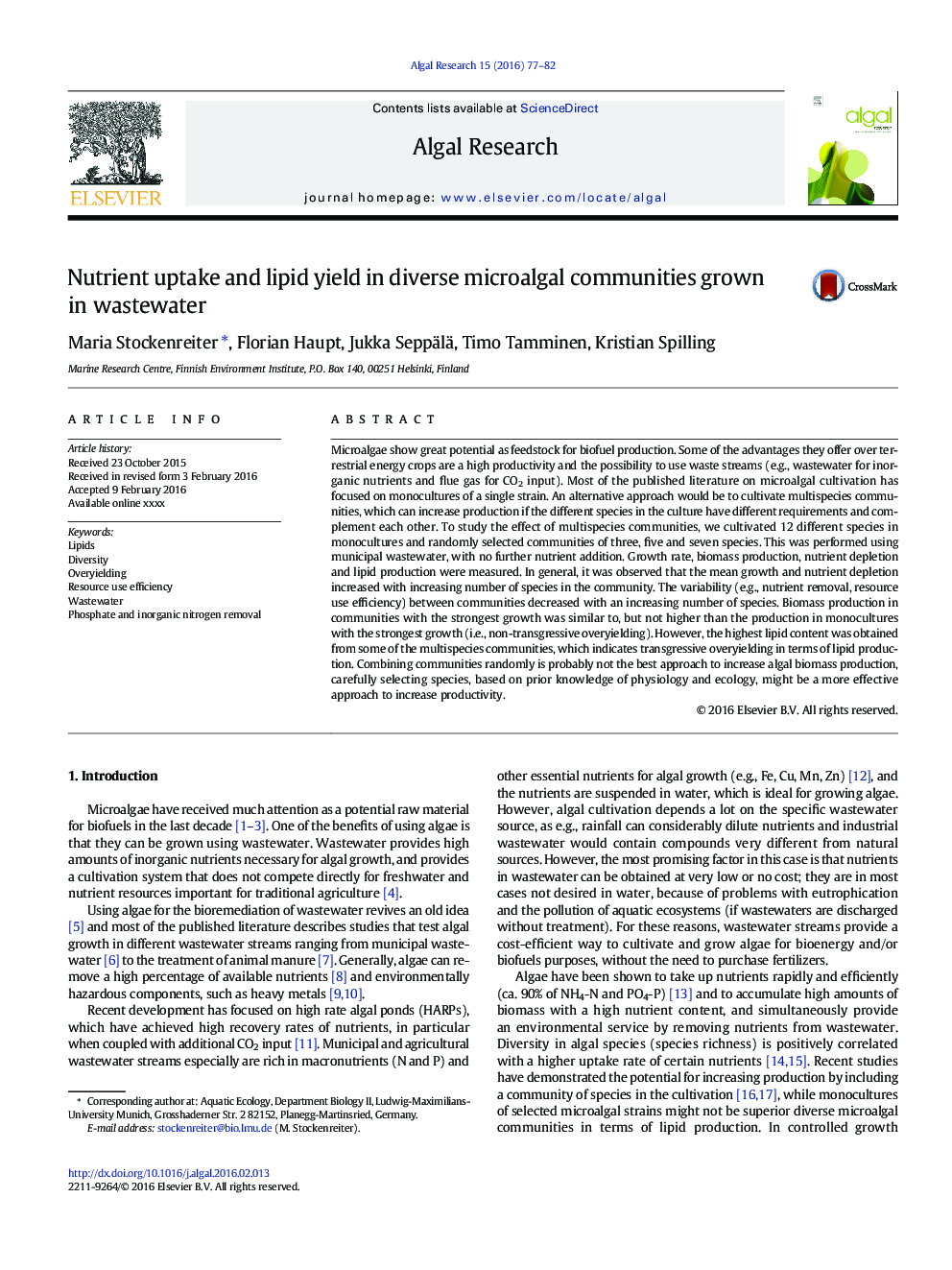| Article ID | Journal | Published Year | Pages | File Type |
|---|---|---|---|---|
| 8087250 | Algal Research | 2016 | 6 Pages |
Abstract
Microalgae show great potential as feedstock for biofuel production. Some of the advantages they offer over terrestrial energy crops are a high productivity and the possibility to use waste streams (e.g., wastewater for inorganic nutrients and flue gas for CO2 input). Most of the published literature on microalgal cultivation has focused on monocultures of a single strain. An alternative approach would be to cultivate multispecies communities, which can increase production if the different species in the culture have different requirements and complement each other. To study the effect of multispecies communities, we cultivated 12 different species in monocultures and randomly selected communities of three, five and seven species. This was performed using municipal wastewater, with no further nutrient addition. Growth rate, biomass production, nutrient depletion and lipid production were measured. In general, it was observed that the mean growth and nutrient depletion increased with increasing number of species in the community. The variability (e.g., nutrient removal, resource use efficiency) between communities decreased with an increasing number of species. Biomass production in communities with the strongest growth was similar to, but not higher than the production in monocultures with the strongest growth (i.e., non-transgressive overyielding). However, the highest lipid content was obtained from some of the multispecies communities, which indicates transgressive overyielding in terms of lipid production. Combining communities randomly is probably not the best approach to increase algal biomass production, carefully selecting species, based on prior knowledge of physiology and ecology, might be a more effective approach to increase productivity.
Related Topics
Physical Sciences and Engineering
Energy
Renewable Energy, Sustainability and the Environment
Authors
Maria Stockenreiter, Florian Haupt, Jukka Seppälä, Timo Tamminen, Kristian Spilling,
